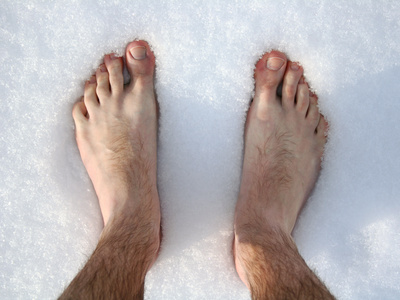
Plantar fasciitis is a common cause of heel pain. It is an irritation and inflammation of the plantar fascia, which is a band of tissue that runs along the bottom of your foot from your heel to your toes. Although more common in athletes, plantar fasciitis can occur in anyone.
Causes
The plantar fascia provides shock absorption and support in the arch of the foot. If the fascia becomes too stressed, it may become irritated or inflamed, and possibly develop small tears. In many cases, however, plantar fasciitis often arises without any apparent cause.
There are several risk factors that can increase your likelihood of developing plantar fasciitis, however.
- Age: Plantar fasciitis more commonly affects individuals between 40 and 60 years old.
- Exercise: Certain activities that put a lot of strain on your heel like running, basketball and dance can lead to the development of plantar fasciitis.
- Foot Shape and Stride: Having flat feet, a high arch, or an abnormal gait affects how your weight is distributed when you stand and walk, which puts more stress on the plantar fascia.
- Occupation: If your job requires you to stand on hard surfaces or walk a lot, it can cause damage to the plantar fascia.
- Weight: Excess weight puts strain on the plantar fascia.
Symptoms
Symptoms of plantar fasciitis can include:
- Pain that decreases as the day progresses but returns later.
- Pain that starts as soon as you get out of bed, or once you stand after sitting for a long time.
- Sharp, aching pain along the bottom of your foot, usually coming from your heel.
- Sudden pain in your heel, or a gradual building of pain.
- Swelling, redness, or heat coming from your heel.
Treatments

Depending on the severity of your plantar fasciitis, there are several different treatment options available.
Home Remedies
- Apply ice or a cold pack. Do not apply directly to the skin, and instead use a towel or paper towel to protect your skin from damage. Apply for short periods of time (approximately 10 minutes) a few times a day to ease some of the pain.
- Tape your foot. As with any muscle injury, taping it up helps to relieve some of the strain you may be experiencing.
- Take pain relievers. Ibuprofen and naproxen can help reduce pain and inflammation from plantar fasciitis.
Therapy
- See a physical therapist. They can provide you with some stretches and exercises to help strengthen the muscles around your ankle and heel and stretch your plantar fascia.
- Consult a doctor about night splints and orthotics. Splints will help stretch out the arch of your foot and your calf while you’re sleeping, helping to lengthen the plantar fascia. The orthotics can be worn during the day and can either be custom-fit or store bought. They will help to evenly distribute pressure and alleviate some pain.
If you’re experiencing any of these signs of plantar fasciitis, you’re a new patient looking for a podiatrist in Toronto, or you have any other foot care concerns, don’t hesitate to contact our foot clinic today!
You might also want to check our related posts:









